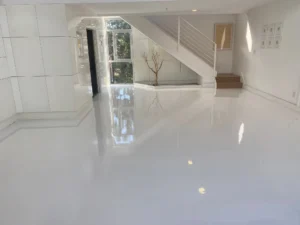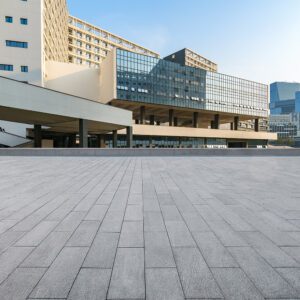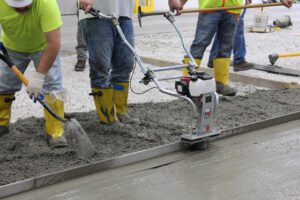Concrete Vibration - What Is It And How Is It Done?
If you’re involved in the construction industry, you’ve likely heard of concrete vibration. But what is it exactly, and how is it done? Concrete vibration is a crucial process that helps to build strength and durability in concrete structures. It involves the use of vibrators to eliminate air pockets and ensure that the concrete is properly compacted.
In this blog post, we’ll explore the different types of concrete vibrators and the benefits of using them. We’ll also discuss some of the most common problems that can occur when vibrating concrete and offer tips for getting the best results. Whether you’re a seasoned concreting professional or just starting out in the construction industry, this post will provide valuable insights into the world of concrete vibration.
What is concrete vibration?
Concrete vibration is a process that helps build strength and durability in concrete structures by eliminating air pockets and improving the compaction of concrete. When concrete is mixed and poured into a form or mould, it is in a semi-liquid state, which can result in the formation of air pockets or voids. These voids can compromise the strength and durability of the concrete structure, and can even lead to structural failure over time.
To prevent these issues, concrete vibration is used to ensure that the concrete is properly compacted and free of air pockets. Vibrators are used to agitate the concrete, causing the air bubbles to rise to the surface and escape. This process, also known as consolidation, results in a denser and more uniform concrete mixture, improving the strength and durability of the final product.
Concrete vibration is commonly used in the construction of foundations, walls, columns, and other concrete structures. It is an essential process for ensuring that the concrete is strong and durable, and can withstand the weight and pressure of the surrounding environment.
How is concrete vibrated?
Concrete is typically vibrated using either internal or external vibrators.
Internal vibrators, also known as immersion or poker vibrators, are inserted directly into the concrete mixture to agitate the concrete from the inside out. These vibrators consist of a vibrating head, a power source, and a flexible shaft. The vibrating head is inserted into the concrete mixture and vibrates at a high frequency, causing the air bubbles to rise to the surface and escape. Internal vibrators are commonly used in the construction of walls, columns, and other vertical structures.
External vibrators, also known as surface vibrators, are placed on the surface of the concrete and vibrate the concrete from the outside. These vibrators consist of a vibrating plate or screed that is placed on the surface of the concrete and vibrates at a high frequency, causing the concrete to settle and the air bubbles to rise to the surface and escape. External vibrators are commonly used in the construction of horizontal surfaces such as floors, driveways, and sidewalks.
Regardless of the type of vibrator used, it is important to vibrate the concrete evenly and consistently to ensure that all areas of the concrete are properly compacted. Proper vibration also helps to ensure that the concrete is level and free of voids or other imperfections.
Are there different types of concrete vibrators?
There are several different types of concrete vibrators, each designed for specific applications and types of concrete structures.
- Immersion Vibrators: Immersion vibrators, also known as poker or internal vibrators, are the most commonly used type of vibrator in the construction industry. They are inserted directly into the concrete mixture and vibrate from the inside out, ensuring that the entire section is uniformly compacted. Immersion vibrators are typically powered by an electric motor or air compressor and come in a range of sizes and shapes to suit different applications.
- Surface Vibrators: Surface vibrators, also known as screed or external vibrators, are placed on the surface of the concrete and vibrate from the top down. They are typically used for horizontal surfaces such as floors, driveways, and sidewalks. Surface vibrators are designed to help settle and level the concrete, ensuring that it is flat and free of voids or other imperfections.
- Form Vibrators: Form vibrators, also known as table vibrators, are used for larger concrete structures such as beams, slabs, and panels. They consist of a vibrating table that is placed underneath the concrete structure and vibrates at a high frequency to ensure that the entire section is uniformly compacted. Form vibrators are typically used in precast concrete production facilities, where large quantities of concrete structures are produced.
In addition to these three main types of concrete vibrators, there are also several other specialised types of vibrators available for specific applications. For example, railcar vibrators are used to help compact concrete in railcar forms, while external concrete vibrators are used for concrete walls and columns.
What are some of the most common problems when vibrating concrete?
Despite the benefits of concrete vibration, there are several common problems that can occur if the process is not done correctly.
- Incomplete Compaction: If the concrete is not properly vibrated, air pockets or voids can form within the mixture. This can weaken the structure and compromise its durability over time. To prevent this issue, it is important to ensure that the vibrator is inserted deep enough into the concrete and moved slowly and steadily through the mixture.
- Overcompaction: Overcompaction can occur when the vibrator is left in one spot for too long or is used too aggressively. This can cause the concrete to become too dense and can lead to cracking or other structural issues. To prevent overcompaction, it is important to move the vibrator through the concrete evenly and at a steady pace.
- Segregation: Segregation occurs when the heavier components of the concrete mixture, such as sand and aggregate, sink to the bottom while the lighter components, such as water, rise to the top. This can result in an uneven mixture and weaken the overall structure. To prevent segregation, it is important to ensure that the vibrator is inserted evenly and deeply into the mixture, and that the concrete is properly mixed before the vibration process begins.
- Surface Blemishes: Surface blemishes can occur if the vibrator is used too aggressively or if it is not used evenly across the entire surface of the concrete. This can result in an uneven surface texture or discoloration. To prevent surface blemishes, it is important to use the vibrator evenly and consistently across the entire surface of the concrete.
- Mechanical Damage: The use of vibrators can also cause mechanical damage to the formwork or mould used to shape the concrete. This can occur if the vibrator is inserted too forcefully or if it is used too close to the edges of the formwork. To prevent mechanical damage, it is important to use the vibrator carefully and to ensure that the formwork is properly reinforced and supported.
When is the best time to vibrate concrete?
The timing of concrete vibration is critical to ensuring the best possible outcome for your project. The best time to vibrate concrete is when the mixture is in a semi-liquid state, commonly referred to as the plastic state. This is the ideal time to ensure the concrete is properly compacted and that all air pockets are removed from the mixture.
Waiting too long to start the vibration process can cause the concrete to harden and make it more difficult to properly compact. Starting the vibration process too early, on the other hand, can cause the concrete to settle unevenly and lead to structural issues.
In addition to timing, the frequency and duration of the vibration process are also important considerations. The frequency of the vibrator should be chosen based on the size of the aggregate and the thickness of the concrete being poured. The duration of the vibration process will depend on the size of the project and the specific application.
It is important to note that the timing, frequency, and duration of the vibration process will vary depending on the specific application and the type of concrete being used. Your concrete supplier or contractor will be able to advise you on the best timing and methods for your specific project.
Concrete Vibrating Tips
Proper concrete vibration is essential for building strong and durable structures. Here are some tips to help ensure that your concrete vibration process is done properly:
- Choose the Right Vibrator: There are different types of concrete vibrators, each designed for specific applications. Be sure to choose the right type of vibrator for your project, based on the size of the area being poured and the specific requirements of the project.
- Use the Correct Frequency: The frequency of the vibrator should be chosen based on the size of the aggregate and the thickness of the concrete being poured. Using the correct frequency will ensure that the entire volume of the concrete is uniformly compacted.
- Insert the Vibrator Evenly: The vibrator should be inserted evenly and deeply into the concrete mixture. This will help to ensure that the entire volume of the mixture is compacted uniformly, and that all air pockets are removed from the mixture.
- Move the Vibrator Slowly: The vibrator should be moved slowly and steadily through the concrete mixture. Moving too quickly or too aggressively can cause overcompaction, which can lead to cracking or other structural issues.
- Avoid Overlapping Vibrator Paths: When using more than one vibrator, it is important to avoid overlapping the paths of the vibrators. Overlapping can cause the concrete to become overcompacted, leading to structural issues.
- Monitor the Vibration Process: It is important to monitor the vibration process carefully, to ensure that the entire volume of the concrete is uniformly compacted. This will help to prevent voids, air pockets, and other inconsistencies that can weaken the structure over time.
By following these tips, you can ensure that your concrete vibration process is done properly, resulting in a strong and durable finished product that will stand the test of time.
Vibrating concrete properly is an important part of building strong and durable structures.
Vibrating concrete properly is crucial to building strong, durable structures. Concrete that is not properly compacted can contain air pockets, voids, and other inconsistencies that can weaken the structure over time. These imperfections can also cause the concrete to crack, spall, or otherwise fail prematurely.
By using the correct type of vibrator and ensuring that it is used properly, the entire volume of the concrete can be uniformly compacted. This results in a dense, strong, and durable finished product that is less likely to develop structural issues over time. Properly compacted concrete also provides better resistance to weathering and other environmental factors, reducing the need for repairs or maintenance over the life of the structure.
In addition to the structural benefits of proper concrete vibration, there are also economic benefits. By using the correct type of vibrator and ensuring that it is used properly, the amount of concrete needed to fill a specific volume can be reduced. This can result in significant cost savings, as less concrete is needed to achieve the desired strength and durability.
If you are planning a commercial concrete project, Italcon is here to help. Our experienced team of concrete professionals in Melbourne can provide expert guidance and support throughout the entire process, from selecting the right materials to ensuring that the concrete is vibrated properly. Contact us today to learn more about our commercial concrete services and how we can help bring your project to life.
Recent Blog Posts
Contact Us Today
If you’re looking for a passionate and experienced concreter in Melbourne, get in touch with Italcon today. We look forward to discussing your unique concreting or formwork project.


